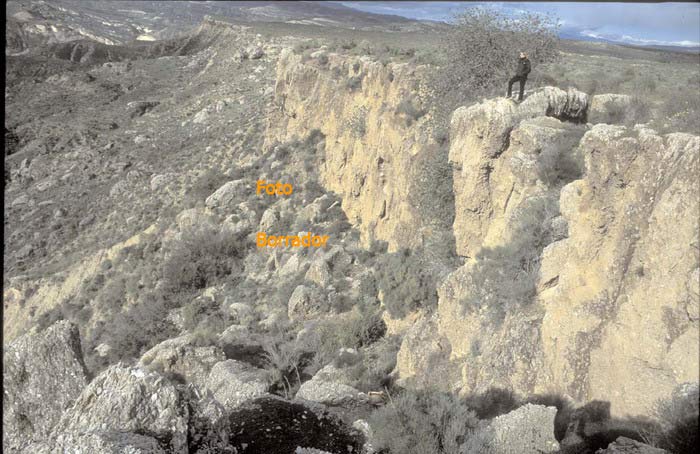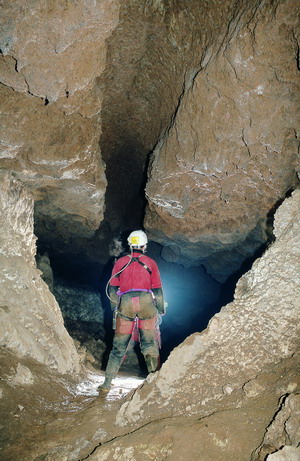
Interestratification passage showing the phreatic ceiling channels.
The evolution of the Gypsum Karst at Sorbas, the origin of its cavities and its karstic relief features are intimately linked with the hydrogeological history of the karst. One possible geokarstological history of the gypsiferous outcrops of Sorbas, which underlines the importance of the relationship between all the factors mentioned above, could be as follows:
1. Over one million years ago the gypsum beds were covered by semipermeable rocks from other geological formations such as sandstones, marls and conglomerates.
2. Gradually, the surface drainage network (rivers and streambeds) became established. This surface network was reflected below ground level in the formation of galleries along the planes of weakness in the rock matrix. The subterranean galleries took on an orientation very similar to that of the surface network - a situation that can still be seen today.
3. As the erosion of the rock continued the gypsum began to be exposed. The first closed forms appeared (dolines), which progressively gave way to larger karstic depressions and deep karstic gullies that channelled the surface water into the subsoil. The surface network was captured at numerous points, while deep underground the large galleries began to develop along the marly interstrata.
4. Finally, surface karstification became more accentuated until the only thing that remained of the surface drainage network was a series of closed depressions, sinkholes and chasms. Along the contact of the gypsum and its impermeable base a gypsiferous scarp was formed by differential erosion. So, while the superficial erosion of the poorly permeable outcrops continued, the gypsiferous platform maintained its topographical elevation due to the high permeability of the gypsum.
The four stages described, separated rather artificially above, actually combine in reality as a result of a hydrogeological determinant of the utmost importance, namely the gradual drop in the water level in the gypsiferous aquifer over hundreds of thousands of years. For this reason, one cannot separate the hydrogeological determinants from the speleogenetic evolution of the gypsum karst.

Interestratification passage showing the phreatic ceiling channels.

The gypsum platform where the karst has been developes.